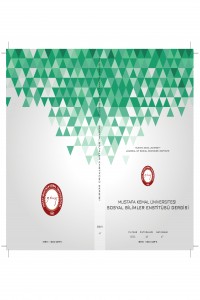Abstract
In the 19th century femininity was constructed upon docility norms and on the role played by a woman in the family either as wife to her husband or mother to her children. A docile woman is a woman who is submissive, devoid of freedom to decide on her body and self, and conforms to the de-fleshed image of femininity created by patriarchy. Nora in Henrik Ibsen’s A Doll’s House and Candida in Bernard Shaw’s Candida are female characters who reject or subvert the docility norms of the 19th century by trying to build an independent identity for themselves and refusing the roles imposed on them by the traditional patriarchal society. Employing Luce Irigaray’s term ‘disruptive excess,’ they represent ‘disruptive excess’ who do not conform to the image of femininity created by the 19th patriarchal ideology. This paper studies A Doll’s House and Candida in terms of how Nora and Candida question patriarchal codes of thinking and subvert with their behavior, ideas, or personal change the docility norms they are expected to conform in the marriage institution of the late Victorian era.
Keywords
References
- Adams, E. (1977). Sex roles or true vocation. (Ed. R. Weintraub), Fabian Feminism, London: The Pennsylvania State University Press.
- Foucault, M. (1995). Discipline & punish. New York: Vintage Books.
- Gilbert, S. & Gubar, S. (1979). The madwoman in the attic. New Haven: Yale University Press.
- Gilmartin, A. (1965). Mr. Shaw’s many mothers. The Shaw Review, 8(3), 93-103. Retrieved March 28, 2021, from http://www.jstor.org/stable/40682068
- Grene, N. (1984). Bernard Shaw - A critical view. London: Macmillan Press.
- Hemmer, B. (1994). Ibsen and the realistic problem drama. (Ed. by J. McFarlane), The Cambridge companion to Ibsen. Cambridge: Cambridge University Press.
- Holroyd, M. (1979). George Bernard Shaw: Women and the body politic. Critical Inquiry, 6(1), 17-32. Retrieved March 30, 2021, from http://www.jstor.org/stable/1343083
- Ibsen, H. (1998). Four major plays. New York: Oxford World's Classics.
- Moi, T. (1985). Sexual/textual politics. New York: Methuen
- Öğünç, B . (2017). From Mrs Warren’s profession to press cuttings: the woman question in George Bernard Shaw’s plays. Selçuk Üniversitesi Edebiyat Fakültesi Dergisi, (37), 55-66 . DOI: 10.21497/sefad.328244
- Shaw, B. (1898). Plays pleasant. New York: Penguin Plays.
- Shaw, B. (1986). Major critical essays. New York: Penguin Classics.
- Templeton, J. (2015). Ibsen’s women. Plunket Lake Press, 2015.
- Weintraub, R. (1977). Fabian feminist: Bernard Shaw and woman. Pensylvania: Pensylvania State University Press.
Abstract
References
- Adams, E. (1977). Sex roles or true vocation. (Ed. R. Weintraub), Fabian Feminism, London: The Pennsylvania State University Press.
- Foucault, M. (1995). Discipline & punish. New York: Vintage Books.
- Gilbert, S. & Gubar, S. (1979). The madwoman in the attic. New Haven: Yale University Press.
- Gilmartin, A. (1965). Mr. Shaw’s many mothers. The Shaw Review, 8(3), 93-103. Retrieved March 28, 2021, from http://www.jstor.org/stable/40682068
- Grene, N. (1984). Bernard Shaw - A critical view. London: Macmillan Press.
- Hemmer, B. (1994). Ibsen and the realistic problem drama. (Ed. by J. McFarlane), The Cambridge companion to Ibsen. Cambridge: Cambridge University Press.
- Holroyd, M. (1979). George Bernard Shaw: Women and the body politic. Critical Inquiry, 6(1), 17-32. Retrieved March 30, 2021, from http://www.jstor.org/stable/1343083
- Ibsen, H. (1998). Four major plays. New York: Oxford World's Classics.
- Moi, T. (1985). Sexual/textual politics. New York: Methuen
- Öğünç, B . (2017). From Mrs Warren’s profession to press cuttings: the woman question in George Bernard Shaw’s plays. Selçuk Üniversitesi Edebiyat Fakültesi Dergisi, (37), 55-66 . DOI: 10.21497/sefad.328244
- Shaw, B. (1898). Plays pleasant. New York: Penguin Plays.
- Shaw, B. (1986). Major critical essays. New York: Penguin Classics.
- Templeton, J. (2015). Ibsen’s women. Plunket Lake Press, 2015.
- Weintraub, R. (1977). Fabian feminist: Bernard Shaw and woman. Pensylvania: Pensylvania State University Press.
Details
| Primary Language | English |
|---|---|
| Journal Section | Research Article |
| Authors | |
| Publication Date | April 28, 2021 |
| Published in Issue | Year 2021 Volume: 18 Issue: 47 |

